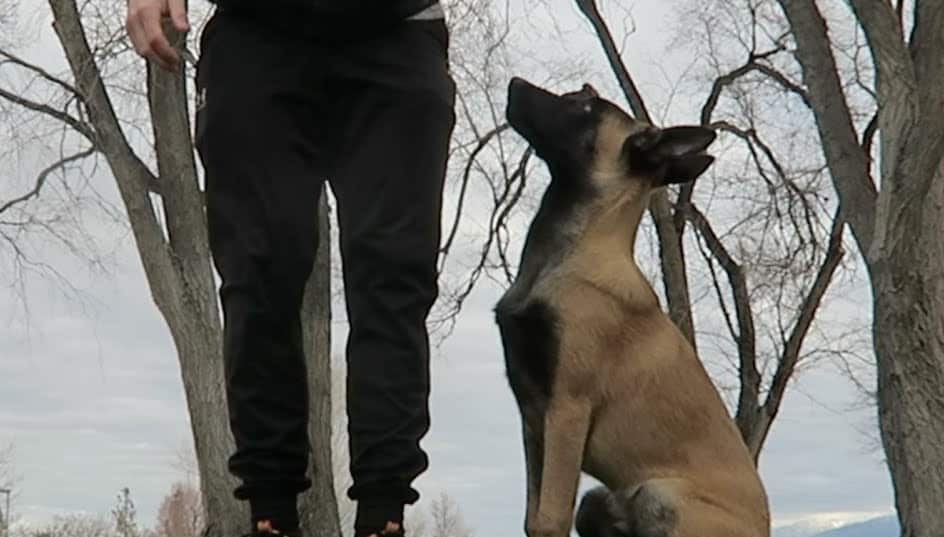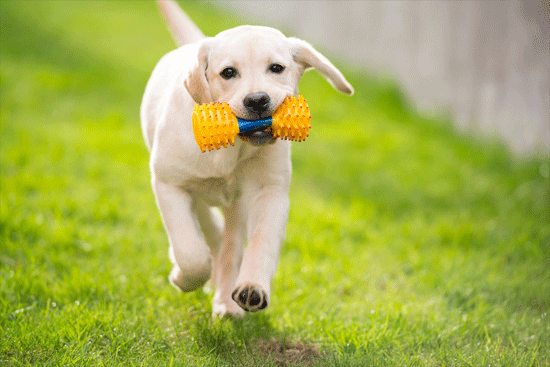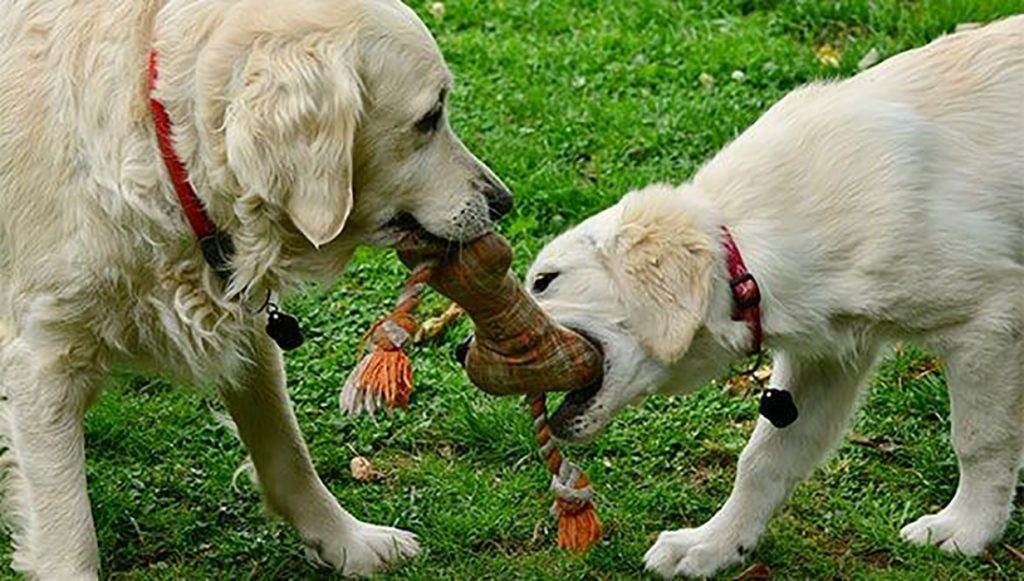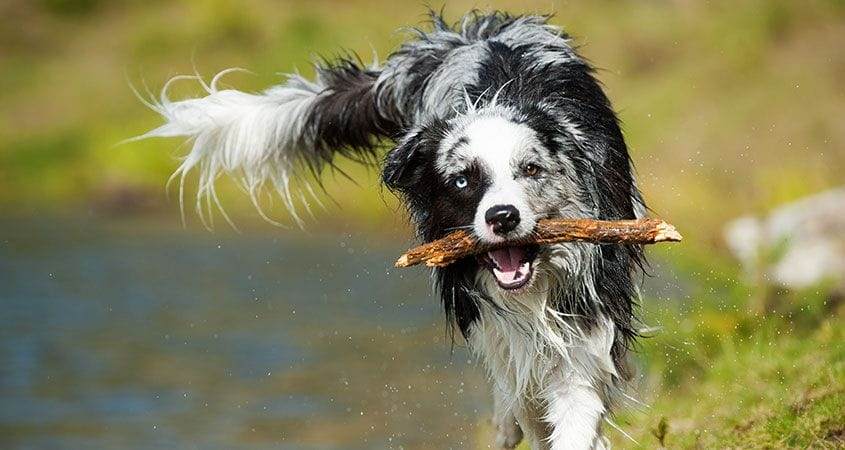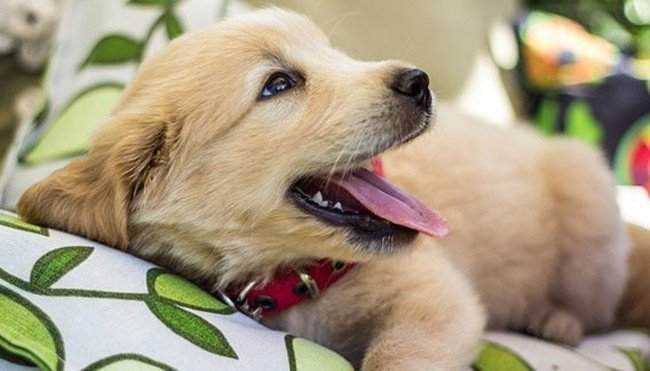Retrievers are one of the most enthusiastic dogs. The right type of training can make him a better companion for every activity. But while training there are certain do’s and don’ts that should be followed or else it will affect the training.
Basic rules to be followed while training your retriever:
- The critical period: The first six months are considered the critical period of golden retrievers. This is the period when you have to observe your pup for his skills. During this period, we have to carefully observe them on their reactions. The response to each stimulus be it sound, noises or people. If you think he lacks any basic retriever skills, it is the right time to instil the required skills.
- Training based on age and environment: The young pup should be trained for only shorter sessions, because at this age their body and brain are still in development. If you have adult golden retrievers that have recently come to you and your house then he needs time to adjust to the new environment. This means he is not ready for high level of training so be patient with him.
- Fixing up the strange behaviour: When dogs are young, they behave unusually which for us seems cute but these are the ones that the trainer has to watch out for. These behaviours become a hazard in the training field. So, you have to eliminate any kind of strange behaviours in the young period itself. Some of the common deviant behaviours include jumping on people, biting, chewing, getting on furniture and begging. At first these behaviours may seems cute but on training field it gets difficult. For example, if we try to take the retrieved duck from him, he resists, because he thinks it’s his prize and doesn’t give it to you. This is the result of you allowing him to chew on the toy you have given to him but haven’t taken back.
- Slow and rigorous: Patience is one of the important things a trainer should possess. When the trainer is in a hurry he moves too quickly on the golden retriever and forgets revisiting the skill. The end being that your dog getting forgetting everything that you told. So, when it comes to training, you have to be slow in the sense that once you have taught him a skill, review and go back again until the skill become involuntary for your golden retriever even before we try to move on. For some dogs it will be difficult to easily master a skill, so based on each dog’s ability you have to progress the training. If he needs time, provide with him more time than pushing him too much.
- Building the foundation: We don’t need to make him do all the complicated skills at once. We should break these complicated ones to much simple ones. While working on with a new skill, you have to make sure that the golden retriever understands the skills at its core. It gives you a clear understanding of where the problem lies for your dog to understand the skill. If he is not getting a skill then work backwards to the progression to see at which part, he has gone wrong. Identify the inaccurate skill, start working there and then progress forward.
- Making the training clearer: One of the most effective methods for making your Labrador retriever understands the training is the clicker method. This method is aided by sound. In this method sound marks a specific behaviour. The dog responds to the sound and it makes a perfect communication between the trainer and your golden retriever. This communication can be used for all kind of dog species. The best advantage of this method is that it takes less time for a dog to understand the skill that we are trying to teach him.
- Fixing problems one by one: Most of the retrievers are hyper active dogs and result of these creates too many problems in training. While fixing up, work on one problem at a time. If you try to work on too many problems at a time it gets worse to your Labrador retriever, because he gets confused and perform even worse than before. In the trainer’s point of view, you get disappointed at the pace at which your dog is progressing. While deciding to work on a problem, start at the most basic issues. Rewarding for better behaviors can speed up the correction process. While solving problems it is better to not punish him for his behaviour instead work on the basic reason for this problem. Eliminating the root cause of problem one at a time can make training process more effective.
- Practice distancing when he gets good up close: This rule works on a simple logic, if he doesn’t show a skill when he is closer to you, then he won’t be doing it yards away from you. When he masters at a skill while he is closer to you, then he is ready to do field training. When working on field, don’t progress too soon else you will get disappointed. Practice distancing slowly as his confidence increases. When his competence increases add more and more distance one by one.
- Off- leash: Every training should start on the leash. But for younger pups training should not start on leash. After learning, the basic obedience rules then only move on to the leash. So, for such cases training can be done based on rewards or treats. Training with leash has a positive impact of making him understands the right behaviour. Applying pressure on the leash on each direction makes him understand the action he needs to perform. There by you would have a control over your Labrador retriever. When he gets obedient in the leash then only goes for off-leash. Most people use e-collars while going off leash but before using you need to have a clear understanding of its uses because a single mistake may result in the abuse of dog.
- Attention: If you want to communicate effectively, make sure that he is listening to you. Before asking him to do something then first you seek for his attention and then make him wait. Distractions are one of the reasons he may not be listening to you. So, for first sessions of training you have to remove all the distractions to make him attentive.
- Safe training: Earning trust comes from making your dog believe that he is safe in your hands. To ensure his safety make sure that he has a well fit collar and 4-5-foot flat training leash. Golden retrievers are one of the most enthusiastic dogs, and they are much strong. So, it is better to opt for a gentle leader head collar which will give you an advantage while you walk around an exciting environment. When training him for jumping, you have to make sure that the stands you have provided is stable else he will not repeat it. Providing a safer environment for training is essential for efficient training.
- Progressive training: Once the Labrador retriever masters the basic skills, you can increase your standard of training. Start from the basic and move to higher levels one by one. While moving to the higher ones you have to progress slowly and give him time to learn it. Just as said earlier patience is needed else you will get frustrated. For example, if you want to make him jump a higher stand, then first you have to start with stands at lower levels. Once he finds it less dangerous, then slowly increase the height; there by the dog doesn’t feel too much stress as he learns slowly.
- Regular training: Mastering a skill require practice. You don’t need to increase your training time but it can be done easily. Including training in the daily activities can speed up the process. There are many day-to-day situations to which we can include our training practices. For example, while giving dinner, before placing the bowl on the floor ask him to sit. When he sits obediently place the bowl before him and command him to stay, after a few seconds provide with him the command eat. Just like this there are daily situation to which we can include training. Some of them includes the down and stay command after a walk. This gives an additional advantage of repetitive training with positive progression.
- First sessions in land then water: Just like the earlier rules, don’t start with the complicated ones at first. You don’t need to rush to the training in water because land training should be given more priority in water; your Labrador retriever gets easily distracted while aiming towards a bumper. So, each skill has to be mastered first on the land. Before moving to longer retrieves in water start with smaller ones.
- Mastering skills in every locations and situations: When a golden retriever masters a skill, you have to make him do it at different situations and in various locations. This rule is important because dogs behave differently on each location. The training a skill repetitively on one location doesn’t make him does that skill in a different location. This will make him do that skill in a different location. This will make him understands that the command was not based on that particular location. The more locations for the training, more will he get associated with the command.
- Changing the locations followed by a distressing experience: Dogs cannot handle a negative experience. If you continue to train him in the same distressing location there may be problems of anxiety in dog’s behavior which will definitely affect the training. So, it’s better to move on to a new location to practice the skill because it will increase the dog’s confidence. The distressing response may be due to many reasons so we should location rather than trying to make him adjust to the environment.
- Fun training sessions: The best way to make retriever learns fast is through games. If you keep the sessions funnier it will help you to retain his involvement and keep him interested. The communication you have with your golden retriever also affects the training. While you give a command make your voice more of a happier one rather than a stern one. It is better to avoid yelling at your dogs. If he doesn’t respond to your command, you can make him being attentive by making the task a little easier for him. Trainer’s attitude while training also has an impact. For example, if he commands him something with a little excitement you can watch him doing it more eagerly.
- Socializing your puppies: Golden retrievers are more friendly dogs and attention seekers. So, during his young ages it is better to introduce him to as many people as possible. This will make him more friendly. Each meeting should be positive and joyous to the pup. Training with the kids at home is more effective. But we should have a limit over it because even though the pups are calm there may be chances of your pup going out of control such as biting. Socialization does not confine around people; it also includes the response of your dog with other dogs and other pets in the family. Familiarizing an environment is also included in socialization.
- Everyday exercise: Golden retrievers are highly energetic dogs so it is important to give them required exercises. They easily get bored. This trait can lead to a more catastrophic behaviour and other behavioral issues. If regular practices are not provided, he loses his enthusiastic behaviour and training will become tougher. Your retriever should be given an hour of exercise each day. Long walks are one of the ways to exercise the dog. Playing fetch is another method to exercise your dog.
- Involvement of each family member in training: It is very good to keep up a positive relationship with the retriever by each family member. The family members may include other pets. If the retriever gets a positive relationship with other pets then they can feel a sense of safety around him. If not give enough supervision to separate them. Encourage each of the family members to work on giving him default behaviour.
- Training should continue on adolescent: Golden retrievers are playful dogs and they still remain in a puppy like behaviour even if he has reached adulthood. Every mischiefs and energy level he had on the young age will still continue in the adolescent age. So, they have to be trained for behaviour management in the adulthood too. As we all know they grow to be larger and strong so common mischiefs of jumping upon people should be managed else it will create more serious issues.
- Rewards: Some people say that a rewarded behaviour has more probable chance of getting repeated. If you reward your dog for doing a certain task then he will surely repeat it. But trainers have to watch out for rewarding the misbehaving. If we continue rewarding for the worst behaviour it will affect your n the future so we have to be careful about rewarding our dogs. If we don’t reward a good reaction then we might be missing an opportunity. If we don’t accompany rewards with good response then there might be a possible chance of that behaviour getting faded.
- Right trainer: Most dog problems arise from the wrong training. A trainer’s mental situation also affects training. If you had a bad day, then it’s better to end the day with fun bumper training session for a few periods. If we train while we are in a bad mood, we will begin throwing our anger over the Labrador retriever. This will create a new problem which we will have to fix later. The tone of our voice has impacts on the dog which may cause severe anxiety issues later.
- Understanding habitual or instinctive response: When you introduce the Labrador retriever to a new situation, he might be reacting differently than expected. This is because Labrador retriever respond based on their habit or instinct. If you have not fully trained on a habit there might be chances where he might not be doing it. Instinct or habit response may be one of the bad behaviors that you have already corrected. So, train and train until he began doing it mindlessly. Also train him the same skills in different situations and environment. There by making him clear of the task or skill learned.
- Training to achieve success: If we have trained him the most basic rules and have laid a foundation to it then he will definitely succeed in the second stage of that task. As we know that success for them come in the form of rewards. They learn skills for rewards and increasing the reward he will definitely repeat the behaviour. Reward your golden retriever for each simple task that we have broken down from a complicated task. The success at each step increases his confidence. This is helpful to the trainer in identifying where he is struggling or unable to execute the skill. If you are sure that he is most likely to succeed then we can proceed to the sessions. If not then we have to alter something in the training.
- Never push him: In every training you might reach a point where your Labrador retriever is not interested in performing the skill in the way you want. In that situation never push your dogs. If he is not getting it don’t keep following the same method hoping that he will get it eventually. If he cannot perfect it back up the training process to a step behind. Let him excel at that stage and then progress to next stage. Successive repetition of every task will make a clear idea to your Labrador retriever hence you don’t need to make him do something by pressure. You just need to be a little patient with him rather than pushing him.
- Enforcing command: As a trainer you should be one to reward or enforce behaviour. The right time of enforcing is important. Correcting the behaviour should be at the moment when he infracts and rewards for only success should be given. By following this way, the golden retriever will understand the behaviour for which he got the reward. This method increases the chance of repeating the performance.
- The timing for rewards: Studies have shown that reward for a specific behaviour should be given within a time span of 1.3 seconds. After this time period rewarding or punishing doesn’t make the dog to change the behaviour because at this time he had no idea why he is been punished for. Mostly dog owners reward him long after completing a task. It is not good because it does nothing in the sense of training. But don’t reward him quickly before he has completed it, because it makes him believe that he doesn’t need to complete it.
- Consistent training: If you want to establish a specific habit to your retriever, the training should be made consistent. Training at same time everyday has a positive benefit. By doing this he gets geared up before the training sessions. Our mannerism towards the dig has many impacts so it is important to make our response more consistent. Similarly, when we interact with the whole family in terms of training it is important to keep the commands unique. He will continue to maintain the good manners if his guidelines are consistent. But it is ok to have minute difference in the way each of them interacts to the dog.
- Distractions: When we are teaching our dog a new skill, it is important to remove all kind of distractions. Distractions keep the dog from listening to our commands. If he is full attentive, the skill learning can be speeded up. Once the dog have learned the skill and is responding faster to your commands, we can slowly create distractions. If he successfully follows the command even when there are distractions, then it means he has completely understood the skill.
- E-collars: E-collars are one of the most effective reinforcement materials. But if we train him with e collars at everything, it will cause chaos in Labrador retriever’s brain and training program fails. Always teach a new skill with leash and collar. Help your dog understand the required behavior for the given command by means of rewards or pressure. When he quickly acts to the command and gets more confident only then, we should use E-collar as reinforcing material. While using an e-collar you should not forget to give a command before correcting him.
- Reviewing mastered skills: Best method to ensure a progressive training is by returning the training to the foundational skills. The time taken for reviewing the foundation skills does not goes into waste as these are the ones which yield more productivity from future sessions.
- Pressures should not cause fear or pain: Labrador retrievers are dogs which like people very much so it is better to build your relationship on trust. While you apply pressure, it should not cause any kind of pain. A sense of fear increases anxiety in dogs. Anxious dogs are difficult to train. For a received threat dogs start responding aggressively. Aggression re fatal to the dogs because it will make you deviate from the expected behaviour.
- Caring and respecting your dogs: While training your golden retriever we need to ensure that he has proper diet, care and exercises. Because these factors affect the training response and releasing of stress. We should ensure proper nutrition because training requires energy. While training the dog may get inured, healthy golden retriever may find it easier to heal. Nutrition also helps in improving concentration and health. If the dog has certain weaknesses, work on the weakness and not on punishing him.
- Effective training: An effective training depends on the type of methods and resources use and on how much effort we make. All of this depends on the different tests and environment we provide to the dog for training and his behavior according to the environment determines the depth to which we should be training our dog.
- Training based on predicted outcomes: While training we have to ensure that we focus more on success than emphasizing on failures. If you want to test your dog for a specific task, teach him before testing him. If he fails at it do not continue the same training procedure instead change the procedure. It will be more helpful to the dogs if we simplify the procedure. After he gets an idea about the task we can move to the next level.
- Training analysis and interpretation: During the training we have to carefully watch and learn about the dog’s response to various situations and environment. A carefully study of your dog can improve the training to be more effective. If he has a problem with any of the training methods you could easily understand his problem and resolve the root cause which caused the problem. You don’t always have to follow the exact method. The overall approach to the training is the most important thing.
- Maintaining the standards: Standards should be always followed without failure. If the golden retriever is unable to follow it, we should not change the standards instead reduce the difficulty level. Break it down to simpler tasks and learn each of them one by one. Slowly and effectively learning is important than chewing everything at a time.
- Basic obedience first: Before starting any kind of training it is a must to teach him obedience. All retrievers have a natural tendency of retrieving anything. So, start with the commands like “come”, “fetch” and “drop”.
- Training periods: A 5-15-minute period of training for once or twice a day for a couple of days in a week will probably yield good results. If we give our dog an hour of training, it is important to give many breaks. If you increase the learning period to more hours the dog will not learn anything so it is important to know that lesser training gives more benefits.
- Dog training as a lifetime commitment: Even when your dog becomes well-mannered there is things still need to be learned. Dog training improves brain stimulation which will help us in make use of its high energy. Dog training sessions helps in growing the human- animal bond.
- Stress and its effects on learning: Harsh punishment affects the learning process. Studies suggest that there is a strong connection between the dog’s psychological reactions to the stress and learning abilities. But milder ones help in enhancing the learning process but much higher ones inhibit the learning process.
- Training based on the nature of dog: Each dog has its own ability in terms of performance. We as a trainer should identify this. Make your dog to do the best he can and not make him strive for more. Before starting the training carefully examines the dog’s strength facts and weakness. This step helps in deciding the kind of treatment your dog needs. Even though training patterns depend on the Labrador retriever’s ability you should not be changing the most basic and fundamental parts of training.
- Balanced training: Repetitive training is good to ensure that your dog doesn’t forget the skill he has learned. But if you emphasize only on one skill then it may diminish the other skills. So clear repetition should be to all parts of training to make sure that he still remembers every lesson he has learned. Teaching your dog to react to the sound fundamentals is important.
- Proofing behavior: Golden retrievers are considered to be one of the happiest dogs. They can be made well behaved by continuous training. To keep up their enthusiasm they need something to keep them busy. So, keep him busy with by involving him in any kind of dog sports.

